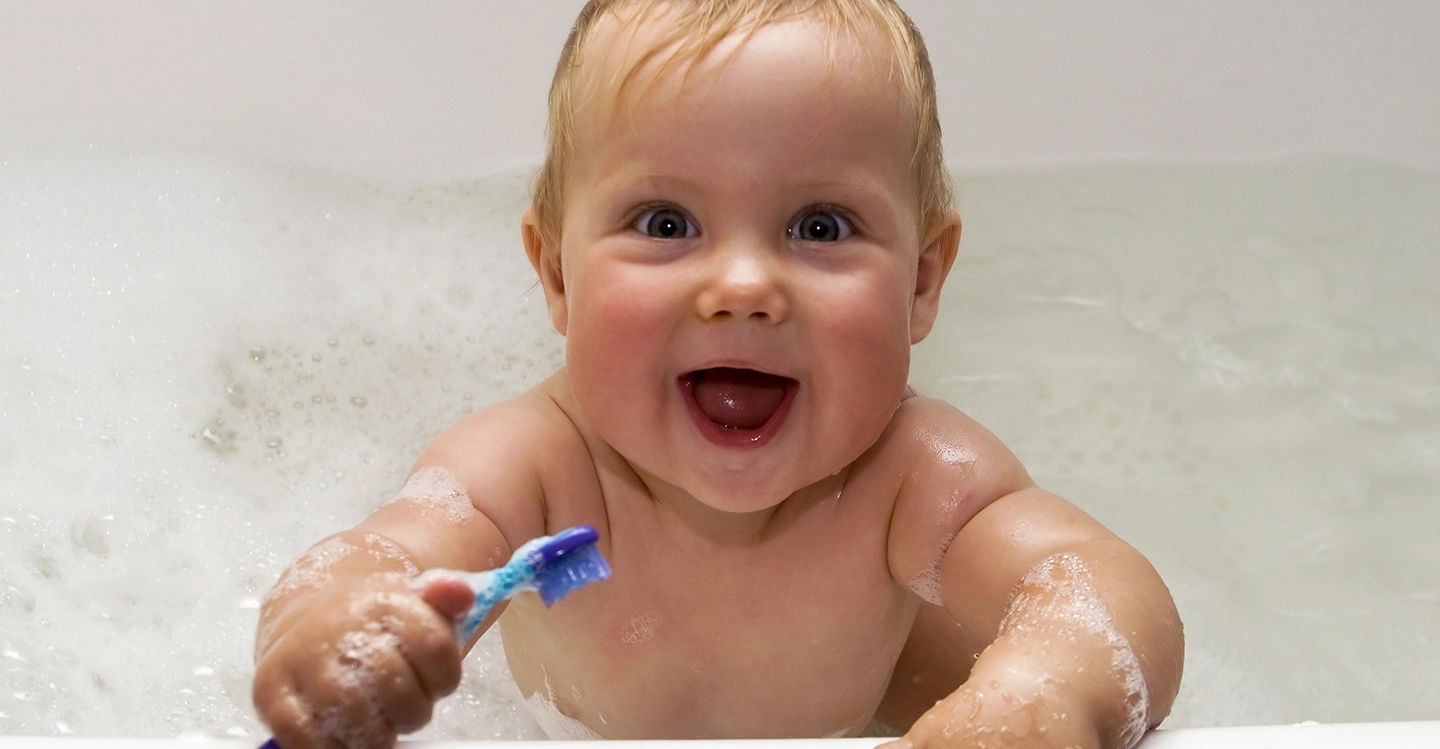For younger babies
Although they won’t have any teeth to brush, cleaning your baby’s mouth is simple and easy to do.
A couple of times a day or after your baby has fed, take a clean, soft cloth and moisten it with lukewarm water. With a section of the cloth wrapped around the point of one finger, open your baby’s mouth and wipe their gums along the inside and outside.
Because there isn’t much surface area to clean, and no hard surfaces for residue to gather, you don’t need to spend much time doing this.
For teething babies
Once your baby’s first teeth have appeared, you can switch to a toothbrush appropriate for babies. These toothbrushes have smaller heads and softer bristles than adult ones. Make sure to run the toothbrush under water before use to soften it, but don’t use toothpaste yet.
Unlike the back and forth strokes that many adults use when brushing, very gently brush in a circling motion, focusing on that one area. Avoid brushing your baby’s gums as these are soft and sensitive and it may upset them.
At first it’s best to brush your baby’s teeth during active parts of the day so that they aren’t agitated before sleep. Be sure to comfort them, coo to them and smile – this will help them to develop a positive association with brushing.
Things to remember
- Avoid toothpaste – dentists and doctors recommend that you avoid using toothpaste until your baby is 18 months old.
- Clean the brush after use – rinse it under tap water and store it upright to allow it to air dry.
- Store the brush separately from yours – this avoids food residue and bacteria spreading to your baby’s toothbrush.
- Change toothbrushes regularly – do so every three to four months or when the bristles appear splayed.



